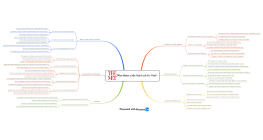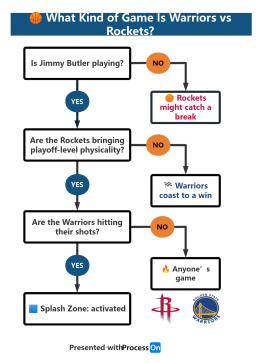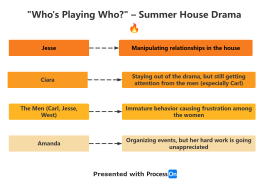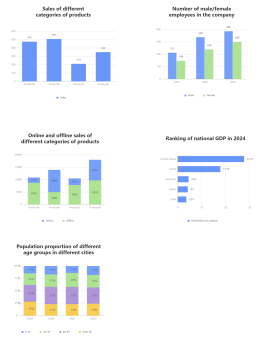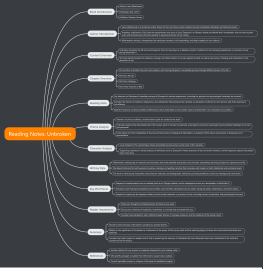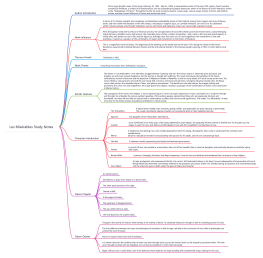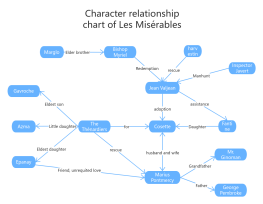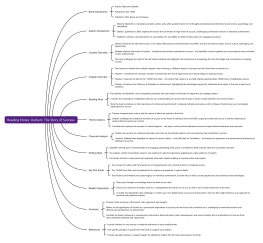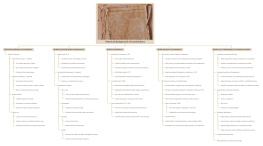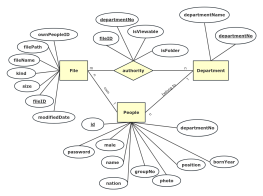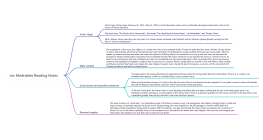The background of the story of Les Mis é rables
2024-09-26 10:57:24 191 0 Report 0
0
Login to view full content
This mind map delves into the background of Victor Hugo's seminal novel, 'Les Misérables,' published in 1862. The story centers on Jean Valjean, a former convict from Toulon, and explores themes of history, revolution, moral philosophy, and justice in France. Key characters include the benevolent Bishop Myriel, the tragic Fantine, and the relentless Inspector Javert, whose pursuit of Valjean adds suspense. The narrative also highlights the love story of Marius and Cosette. Hugo's work reflects the struggle between humanity and evil, emphasizing kindness and universal love amidst adversity, inspired by real-life events and figures.
Other creations by the author
Outline/Content
Subject
A novel published in 1862 by French author Victor Hugo.
Around the personal experiences of the protagonist, Toulon convict Jean Valjean, it incorporates the history, revolution, war, moral philosophy, law, justice, religion and faith of France.
Character Introduction
Jean Valjean
Not only is he the number one protagonist of Les Miserables, but also a symbol of Hugo's kindness and love, a greater unknown hero than the famous hero
Jean Valjean evolved from a fugitive to a hero through four steps.
After leaving Bishop Myriel, he did something that made him regret, which was to snatch a child's coin.
saved someone who was mistakenly taken as his comrade in distress
Knowing that the result might make him lose his beloved Cosette, who he had been correlative with for many years, yet still risking his life to save Cosette's lover Marius.
Because of fear of affecting Cosette's future, she broke off her relationship with her after she married Marius.
There have been multiple conflicts between me and Inspector Javert.
When Jean Valjean became the mayor and the superior of Javert
Caught at Denard's house and nearly killed
The meeting of the two after the barricade and escaping from the underground sewer
Bishop Myriel
Characters derived from real-life materials
Not only a portrayal of Bishop Myriel, but also a true portrayal of the author Hugo, representing Hugo's views.
Fantine
The tragic heroine
Her unfortunate situation is the spark that ignites the conflict between Jean Valjean and Javert, and it is also the reason why Jean Valjean diligently searches for Cosette, and dedicates and sacrifices himself for her.
Chavis
Inspector Javert's pursuit of Jean Valjean fills the book with suspense and dramatic effect.
Valjean was born in prison, the descendant of a convict.
Marius and Cosette
Marius and Cosette are a couple.
The personalities of this young couple are the embodiment of Hugo's pursuit of kindness and universal love.
Apenny
Mrs. Thenardier's daughter
Growing up in a deformed environment, the influence of the environment and the changes in the family made Epanini a complex of shrews, thieves, beggars, and prostitutes.
creation background
In 1801, a poor farmer named Pierre Mo was sentenced to five years of hard labor for stealing a piece of bread due to hunger. After serving his sentence, he struggled to make a living with a yellow ID card and encountered numerous obstacles
Hugo's own friend Victor's escape life when he was young
In 1828, Hugo began to collect information about Bishop Miollis and his family, and planned to write a story about a released convict who was influenced by a saintly bishop and turned from evil to good
Work appreciation
Theme of the Work
The struggle between humanity and evil is unremitting, human nature is pure and kind, and they will all go towards happiness, but they must go through a process of suffering.
Artistic features
structure
The structure of the novel can be represented by the following diagram, where Jean Valjean is the main axis, "the disseminator and embodiment of humanitarianism".
Bishop Fugu is the "source of humanitarianism", giving the driving force.
Fantine, Cosette, Marius, these are all "recipients of humanism", the rings revolving around the axis.
psychological description
Compared with the psychological description in later literary works, Les Misérables has its own unique features in psychological description.
Biography
Victor Hugo
Representative French Romantic writer of the 19th century
Born in Pontoise, France in 1802, with two elder brothers.
In 1818, Hugo was able to compose outstanding verses at the age of 16, and published his poetry collection at the age of 21, making a great sensation.
0 Comments
Next page
Recommended for you
More


